Volume 12 Issue 1 pp. 21-39 • doi: 10.15627/jd.2025.2
The Effect of Curved Light Shelves, Ceiling and Window Characteristics on Daylighting in Thai Classrooms
Lattasit Prasertseree, Nuanwan Tuaycharoen∗
Author affiliations
Department of Building Innovation, Faculty of Architecture, Kasetsart University, Bangkok 10900, Thailand
*Corresponding author.
Lattasit.p@ku.th (L. Prasertseree)
Nuanwan.t@ku.th (N. Tuaycharoen)
History: Received 4 August 2024 | Revised 26 September 2024 | Accepted 3 October 2024 | Published online 2 January 2025
Copyright: © 2025 The Author(s). Published by solarlits.com. This is an open access article under the CC BY license (http://creativecommons.org/licenses/by/4.0/).
Citation: Lattasit Prasertseree, Nuanwan Tuaycharoen, The Effect of Curved Light Shelves, Ceiling and Window Characteristics on Daylighting in Thai Classrooms, Journal of Daylighting 12 (2025) 21-39. https://dx.doi.org/10.15627/jd.2025.2
Figures and tables
Abstract
Daylighting is related to the user's psychological and physiological effects in educational space. The amount of daylighting significantly influences visual comfort, work tasks, academic performance and productivity. Thus, proper lighting with sufficient uniform levels of illuminance should be provided in classrooms. Adequate daylight improves visual performance and comfort for both students and teachers, ameliorating negative effects such as eyestrain, headache and lack of concentration. Therefore, daylighting control strategies are important for learning areas. Installing a light shelf improves indoor daylight quality and also offers shading. Many studies have investigated light shelf characteristics, with most addressing flat light shelves. A curved light shelf with a translucent ceiling has not been investigated in Thai classrooms. Window characteristics combined with multiple curved light shelves with translucent ceilings are also understudied. This study investigated the performance of daylight control strategies in classrooms using a combination of a curved light-self, translucent ceiling and various window characteristics. Fifty-five types of daylighting techniques using the existing classroom as the standard were investigated for illuminance levels and daylight uniformity ratio. DIALux 4.13 was used to simulate the illuminance level, while daylight uniformity ratio was calculated under clear sky conditions for a classroom facing east. Results revealed that for all the lighting options, illuminance levels surpassed the standard of 300 lux. A three curved light shelf (outside concave-upward and inside concave-downward) with a 3 m x 6 m translucent ceiling and a 4-horizontal unit with 6-vertical unit window (Option 4.1.3) had the highest uniformity ratio and gave a better result than the other options (0.300) but still did not reach the standard (0.8). Based on this finding, thus, a three curved light shelf (outside concave-upward and inside concave-downward) with a 3 m x 6 m translucent ceiling and a 4-horizontal unit with 6-vertical unit window should be used in classrooms in Thailand and other buildings with similar characteristics.
Keywords
Daylight, Light shelf, Translucent ceiling, Illuminance
1. Introduction
Numerous studies revealed that daylight has significant restorative effects on human. Daylight can have effects on cognitive, affective, physical and clinical outcomes. The main investigated factors, for example, are presence of an opening, orientation of the opening, opening characteristics, position in relation to the opening, sky condition and sun position [1]. Furthermore, daylight has effects on mood disorder through circadian rhythms [2]. Bright light is an antidepressant for seasonal and other depressions [3]. Moods of people with neurodegenerative disease can be improved by using daylight [4].
Many studies [5,6] have shown that daylight depreciation in a classroom reduces the performance of both students and teachers. Negative effects such as eyestrain, headache and reduced concentration arise when the amount of daylight is too low or too high. The lack of uniform daylighting also induces visual discomfort and increases stress [7]. Thus, appropriate daylighting is essential in classroom. Moreover, many studies have shown that daylighting has a significant effect on student health, well-being, visual comfort, work task performance and productivity [8-12].
Many daylighting techniques have been developed to enhance light levels and uniformity in an educational space. A light shelf is a daylighting method that can protect against severe sunlight, while at the same time enhancing indoor daylight performance by reflecting light into the inner occupied space giving better light uniformity [13]. Hopkinson studied the use of light shelves in hospitals [14], while Kontadakis et al. (2017) investigated the effect of light shelves on luminance during the 1980s [15]. Light shelf parameters include geometry (shape, width, length, mounting height and tilt angle), surface reflectance (specular or diffuse) and type of material. They can lead to greater visual comfort, uniformity contribution and energy saving. Kim et al. (2019) showed that different light shelf angles redirected daylight deeper into the teaching space [16]. Lee et al. (2019) studied the daylighting performance of curved reflectors [17]. They found that outside concave-upward light shelves better promoted daylight into teaching space.
Moreover, numerous studies have been carried out in terms of light shelf’s effects on visual comfort. Pereira de Caastro (1997) [18] showed that lightshelves can reduce heat gain and glare and solar heat gain near windows while improving natural lighting in rooms. Cruz Silva et al. (2003) [19] showed that horizontal light shelves can reduce solar radiation, making adequate illuminance and uniform light distribution in university buildings in Brazil. Lim et al. (2012) [20] found that appropriate glazing and light shelves can enhance visual comfort in an office in Malaysia. Shen and Tzempelikos (2013) [21] demonstrated that indoor light shelves can mitigate glare and enhance comfort. Lim and Heng (2016) [22] found that a well-designed light shelf can reduce illuminance by 34.1–62% and improve light uniformity by up to 178.6%.
In Thailand, most of university classroom confront with daylighting situation such as direct sunlight and non-uniform light. This situation could yield visual and non-visual problem to Thai students. Although, there have been several studies in terms of light shelves in other countries, daylight studies in Thailand have focused on flat light shelves, with scant research conducted on curved shaped light shelves. Kanchan (2017) was the first to investigate the effect of a single curved light shelf for classrooms in a Thai kindergarten [23]. In 2019, Sok explored the effect of multiple curved light shelves in university classrooms in Thailand [24] . His results illustrated that double curved light shelves increased illuminance but with low uniformity ratio. By contrast, results in the USA, Korea showed that curved light shelves improved indoor uniformity ratio [17,25]. Rado (2020) explored the optimal inclination of multiple curved light shelves to enhance daylighting in university classrooms in Thailand [26]. However, research on curved light shelves in Thailand still showed a lack of uniformity ratio.
There have been studies on the effect of a combination between light shelf and translucent ceiling on daylighting performance in buildings. In Poland, a light shelf with a translucent ceiling reflected daylight deeper into the back of the room and improving uniformity ratio [27]. Bora (2024) investigated the effect of both single curved and flat light shelves with a translucent ceiling in an office building in Thailand. Results showed improvement in uniformity ratio but the value did not reach the standard [28].
Although there have been several studies in terms of light shelf and translucent ceiling, the effects of window characteristics and multiple curved light shelves with a translucent ceiling have not been investigated in Thai classrooms. Therefore, the objective of this research as to explore the effect of multiple curved light shelves with a translucent ceiling and window characteristics on daylighting performance in a classroom in Bangkok, Thailand. In this study, fifty-five combinations of multiple curved light shelves, with a translucent ceiling and window characteristics including the base case, were explored in terms of illuminance level and daylight uniformity ratio in a classroom under clear sky conditions. Computer software DIALux 4.13 was used to simulate the illuminance and uniformity ratio compared to the standard. The results of this study can be used as design guidelines for daylighting in classrooms and other buildings with similar characteristics.
2. Material and methods
2.1. Recommended illuminance level and uniformity ratio for classrooms
Illuminance level refers to a measure of the amount of luminous flux falling on the surface area (lumen/m2 or lux) [15]. In this study, horizontal illuminance was investigated. The illuminance standard value of classroom space is usually 300 lux (as shown in Table 1). Uniformity ratio measures the proportion of the lowest illuminance to the average illuminance in the area. Lack of uniformity ratio renders some parts of the room too bright while other areas are too dark. According to CIBSE and IESNA, minimum uniformity ratio should not be less than 0.8. Therefore, this study used 300 lux as the illuminance standard and 0.8 as the uniformity ratio standard cited by many articles. The highest uniformity ratio was chosen as the criterion for choosing the best option among those that reached the illuminance standard.
2.2. Classroom characteristics
The investigated characteristics of classroom in this study was represented as a typical university classroom in Bangkok, Thailand. The classroom was 5 meters wide x 8 meters long and 3.5 meters high as an area of 40 sq.m. The classroom layout, shown in Fig. 1, had one lecture desk, 15 student tables, a door and a window.
This classroom had reflectance of the walls 60%, floor 30% and celling 90%, following the IESNA standard reflectance coefficients [29].
A window to wall ratio (WWR) of 35, 40 and 50% promoted better daylight into the classroom [34], with window to floor ratio (WFR) of 10 to 20% sufficient to receive enough daylight for a small classroom [35]. In a previous study of daylighting in a Thai classroom, Rado (2020) used a window size of 2.2 m by 4.15 m (33% of WWR and 23% of WFR) [26], with classroom window’ s sill height 0.8 m. This study followed Rado’s work and used the same window characteristics. This is because this window characteristics normally used in Thailand’s classroom university. It should be noted that the study was based on there is no obstacle outside the classroom and the here is no effect of the ground outside the room. Thus, there is only the effect of direct sunlight on the considered plane (0.75m). The classroom geometry characteristics are shown in Fig. 2.
2.3. Simulation method
DIALux 4.13 was used to simulate indoor daylight illumination [36]. Many studies have indicated that results from using DIALux compare well with the real environment [37-39, 6]. Moreover, this study validation of the simulation was conducted through comparison with illuminances from field measurement by light sensor and the results from DIALux software (measured on the desk level (0.75 m) with grids with the size of 0.5×0.5 m). It was found that the correlation between these two values was significant (r=0.67, p<0.05), which meant that the results from the software can be used and acceptable.
Sketchup (2022) designed classroom models with different combinations of multiple curved light shelves with a translucent ceiling and window characteristics. In this study, fifty-five combinations of multiple curved light shelves with a translucent ceiling and window characteristics were explored in terms of illuminance level and daylight uniformity ratio in a classroom under clear sky conditions including the base case. The first option represented the base case (a glass façade with no modifications). Only the east orientation was investigated for each option. The reason for choosing this orientation because the pretest (an investigation for all orientation using existing room ith glass facade) shown the highest uniformity ratio results when the room facing east. Thus, it should be noted that the different results would be if investigations are carried out in other orientations. Three different periods of the year were simulated as the equinox (21st of March), summer solstice (21st of June) and winter solstice (21st of December). At each period, five measurements were simulated at 8 am, 10 am, 12 pm, 2 pm and 4 pm. It should be noted that this study measured daylighting performance on the desk level (0.75 m) with grids with the size of 0.5×0.5 m. Illuminances for each time period were, then, averaged of the grid illuminance. Then, average illuminances for each three days were computed. After that, the average annual illuminance was analysed th results of 21st of March were multiplied by 2 then plus with those of 21st of March and those 21st of June and were divided by 4). The uniformity ratios were calculated the similar method to the illuminance.
Finally, the results of average annual illuminance would be compared with the classroom illuminance standard of 300 lux. If there was more than one option above the standard, the average annual uniformity ratio was used as the main criterion and the option with the highest uniformity ratio was selected as the best choice.
2.4. Independent variable
Following the literature review, fifty-five options including the first option as an original classroom without installing a light shelf as the base case and other combinations were created by three independent variables as 1) type of curved light shelf, 2) ceiling characteristics and 3) window characteristics.
2.4.1. Type of curved light shelf
The investigated curved light shelves included three types tested in previous studies [24-26]. Type 1 was an outside two concave-upward light shelf, type 2 was an outside two concave-upward light shelf with an inside two concave-downward light shelf and type 3 was an outside three concave-upward light shelf with an inside three concave-downward light shelf. The curved light shelves were set at 20o relative to the horizontal for both concave-upward and concave-downward types [26]. The reason for selecting the curved light shelves to study due to these kind of light shelf showed the good performance in daylighting in building in Thailand [24-26].
2.4.2. Ceiling characteristics
The six ceiling characteristics were derived from those tested in previous studies [27,28]. The first type was a 3 m x 6 m translucent ceiling, type 2 was a 2 m x 6 m translucent ceiling, type 3 was a 1 m x 6 m translucent ceiling, type 4 was a 3 m x 6 m translucent ceiling with vertical elements installed every 35 cm, type 5 was a 4 m x 6 m translucent ceiling with vertical elements installed every 35 cm and type 6 was a 3 m x 7 m translucent ceiling with vertical elements installed every 35 cm. The reason for selecting these ceiling characteristics to study due to the previous study showed the good performance of using translucent ceiling and the study would like to improve some characteristics of them to enhance uniformity ratio [28].
2.4.3. Window characteristics
The three types of window characteristics included type 1, a 3-horizontal unit and 4-vertical unit window, type 2, a 2-horizontal unit and 6-vertical unit window and type 3, a 3-horizontal unit and 6-vertical unit window. The reason for selecting these window characteristics to study due to the fact that this study would like to make modifications from typical window in university classroom to improve uniformity ratio [24].
The fifty-five testing options are listed in Table 2 and Fig. 3.
2.5. Dependent variables
2.5.1. Illuminance
Illuminance is the total luminous flux incident on a surface per unit area [29]. In this study, illuminance was simulated using DIALux 3.14 and measured 0.75 m above the floor at the study desk surface level. The classroom illuminance standard was 300 lux.
2.5.2. Uniformity ratio
Uniformity ratio is the proportion of the lowest to highest illuminance levels in the area or space. In an education space, the recommended uniformity ratio is 0.8, following the CIBSE standard [40]. As discussed in section 2.1, the uniformity ratio standard used in this study was 0.8 and measured 0.75 m above the floor.
3. Results
3.1. Illuminance level and uniformity ratio at 8.00 am
Figures 4(a) and (b) presents the illuminance levels of the fifty-five options including March 21st (equinox), June 21st (summer solstice) and December 21st (winter solstice) at 8 am. All the options had illuminance values higher than the classroom standard (300 lux). During the summer solstice and equinox, the classroom received more sunlight than during the winter solstice. For the three days, the highest illuminance level was option 2.1.3 (5,567 lux for summer solstice, 3,094 lux for winter solstice and 5,924 lux for equinox), while the lowest was option 4.3.1 (2,445 lux for summer solstice, 1,642 lux for winter solstice and 2,636 lux for equinox).
Figure 4
Fig. 4. (a) and (b) Illuminance levels of all the fifty-five options on March 21st (equinox), June 21st (summer solstice) and December 21st (winter solstice) at 8.00 am.
Figures 5(a) and (b) indicates the uniformity ratio results of all options on March 21st (equinox), June 21st (summer solstice) and December 21st (winter solstice) at 8:00 am. Results demonstrated that the uniformity ratio in all options was lower than the classroom uniformity ratio standard (0.8). During the three days, the highest uniformity ratio was option 4.1.3 (0.120 for summer solstice, 0.112 for winter solstice and 0.121 for equinox), while the lowest was option 3.3.1 (0.079 for summer solstice, 0.052 for winter solstice and 0.065 for equinox).
Figure 5
Fig. 5. (a) and (b) Uniformity ratio results of the fifty-five options on March 21st (equinox), June 21st (summer solstice) and December 21st (winter solstice) at 8:00 am.
3.2. Illuminance level and uniformity ratio at 10.00 am
Figures 6(a) and (b) presents the illuminance levels of the fifty-five options on March 21st (equinox), June 21st (summer solstice) and December 21st (winter solstice) at 10:00 am. In the late morning, the amount of sunlight entering the room dropped. However, the illuminance of all options was still higher than the standard level (300 lux), except for the combinations of option 4 (ranging from 600 lux to 1400 lux). During all three days, the illuminance level of the classroom was highest compared to the others for all options (4,192 lux for summer solstice, 3,584 lux for winter solstice and 4,139 lux for equinox). The lowest was option 4.3.1 (605 lux for summer solstice, 785 lux for winter solstice and 722 lux for equinox).
Figure 6
Fig. 6. (a) and (b) Illuminance levels of the fifty-five options on March 21st (equinox), June 21st (summer solstice) and December 21st (winter solstice) at 10:00 am.
Figures 7(a) and (b) indicates the uniformity ratio results of all options on March 21st (equinox), June 21st (summer solstice) and December 21st (winter solstice) at 10:00 am. The uniformity ratio in all options was lower than the classroom uniformity ratio standard (0.8), similar to those from 8.00 am. During the equinox, summer solstice and winter solstice, the existing option uniformity ratio outcomes showed the lowest values of 0.077, 0.066 and 0.074 respectively. Option 4.13 received the highest uniformity ratio during all three days (0.375 for summer solstice, 0.254 for winter solstice and 0.333 for equinox).
Figure 7
Fig. 7. (a) and (b) Uniformity ratio results of fifty-five options on March 21st (equinox), June 21st (summer solstice) and December 21st (winter solstice) at 10:00 am.
3.3. Illuminance level and uniformity ratio at 12.00 pm
Figures 8(a) and (b) presents the illuminance levels of the fifty-five options on March 21st (equinox), June 21st (summer solstice) and December 21st (winter solstice) at 12.00 pm. The overall illuminance results at noontime were not high (lower than 700 lux) and different from the results at 8:00 am and 10:00 am. Only options 4.2.1 and 4.3.1 were under 300 lux (classroom standard level). The illuminance level of the existing option was higher than the other options in all periods as 681 lux in summer solstice, 614 lux in winter solstice and 543 lux in equinox. Option 4.3.1 had the lowest illuminance in all three periods as summer solstice (239 lux), winter solstice (252 lux) and equinox (229 lux) respectively.
Figure 8
Fig. 8. (a) and (b) Illuminance levels of the fifty-five options on March 21st (equinox), June 21st (summer solstice) and December 21st (winter solstice) at 12.00 pm.
Figures 9(a) (b) shows the uniformity ratio results of all options on March 21st (equinox), June 21st (summer solstice) and December 21st (winter solstice) at 12.00 pm. The classroom equipped with the combination of light shelves gained uniformity ratio twice more than the typical classroom that did not have the combination of light shelves installed, except for the options that combined ceiling types 2 and 3. The uniformity ratio of the existing classroom was still the lowest in all periods as 0.203 for equinox followed by winter solstice (0.172) and summer solstice (0.170). Option 4.6.1 showed the highest uniformity ratio for summer solstice (0.418) and equinox (0.423), while option 4.1.3 was highest for winter solstice at 0.416.
Figure 9
Fig. 9. (a) and (b) Uniformity ratio results of the fifty-five options on March 21st (equinox), June 21st (summer solstice) and December 21st (winter solstice) at 12.00 pm.
3.4. Illuminance level and uniformity ratio at 2.00 pm
Figures 10(a) and (b) shows the illuminance results of all options on March 21st (equinox), June 21st (summer solstice) and December 21st (winter solstice) at 2:00 pm. A low amount of sunlight entered the room during the afternoon. All of the options received illuminance levels less than 400 lux. In all periods, option 3.1.3 received the highest illuminance of 382 lux for summer solstice, 390 lux for winter solstice and 377 lux for equinox. Option 4.3.1 showed the lowest results with 168 lux for summer solstice. 174 lux for winter solstice and 167 lux for equinox.
Figure 10
Fig. 10. (a) and (b) Illuminance results of the fifty-five options on March 21st (equinox), June 21st (summer solstice) and December 21st (winter solstice) at 2:00 pm.
Figures 11(a) and (b) displays the uniformity ratio results of all options on March 21st (equinox), June 21st (summer solstice) and December 21st (winter solstice) at 2.00 pm. Option 3.3.2 showed the lowest uniformity ratio value compared to the other options (0.143 for summer solstice; 0.138 for winter solstice and 0.143 for equinox). The highest uniformity ratio was recorded by option 2.1.3 for summer solstice (0.354), option 4.1.3 for winter solstice (0.357) and option 2.6.3 for equinox (0.342). Similar to the results at 12.00 pm, the classroom equipped with a combination of light shelves gained uniformity ratio twice more than the typical classroom (base case), except for options that were combined with ceiling types 2 and 3.
Figure 11
Fig. 11. (a) and (b) Uniformity ratio results of the fifty-five options on March 21st (equinox), June 21st (summer solstice) and December 21st (winter solstice) at 2.00 pm.
3.5. Illuminance level and uniformity ratio at 4.00 pm
Figures 12(a) and (b) provides the illuminance results of all options on March 21st (equinox), June 21st (summer solstice) and December 21st (winter solstice) at 4:00 pm. All the options showed very low illuminance levels that did not reach the illuminance standard (300 lux). For all periods, option 3.1.3 showed the highest illuminance as summer solstice (355 lux), winter solstice (301 lux) and equinox (342 lux). By contrast, option 4.4.2 showed the lowest illuminance levels in all periods as summer solstice (191 lux), winter solstice (162 lux) and equinox (184 lux). This was because the window faced east and sunlight did not enter the classroom during the afternoon.
Figure 12
Fig. 12. (a) and (b) Illuminance results of the fifty-five options on March 21st (equinox), June 21st (summer solstice) and December 21st (winter solstice) at 4:00 pm.
Figures 13(a) and (b) indicates the uniformity ratio results of all options on March 21st (equinox), June 21st (summer solstice) and December 21st (winter solstice) at 4:00 pm. Option 3.3.2 gained the lowest uniformity ratio as 0.132 for summer, 0.132 for winter and equinox 0.133. However, the results of the other options were not significantly different from this option. In summer solstice, the highest uniformity ratio was 0.349 (option 4.4.3). In winter solstice, the highest uniformity ratio was option 2.4.3, with 0.386 for winter and 0.351 for equinox. Similar to the results at 12.00 pm and 14.00 pm, the classroom equipped with a combination of light shelves gained uniformity ratio twice more than the typical classroom (base case), except for options that were combined with ceiling types 2 and 3.
Figure 13
Fig. 13. (a) and (b) Uniformity ratio results of the fifty-five options on March 21st (equinox), June 21st (summer solstice) and December 21st (winter solstice) at 4:00 pm.
3.6. Average annual illuminance level and uniformity ratio
Figure 14 shows the average annual illuminance for all options including the base case (option 1) in the east orientation. Illuminances from all options were higher than the classroom illuminance standard, 300 lux. For the base case, option 1 had the highest illuminance of 1,927.05 lux. while option 4.3.1 had the lowest illuminance of 721.55 lux. Therefore, to find the best option, uniformity ratio results need to be considered.
Figure 15 illustrates the average annual uniformity ratio for each option. Option 3.3.2 had the lowest uniformity ratio of 0.118, while option 4.1.3 had the best uniformity ratio of 0.300. As mentioned above, all options had illuminance results that passed the illuminance office standard (300 lux). Uniformity ratio was selected as a criterion for selecting the best option. Therefore, option 4.1.3 was the best option in this study.
4. Discussion
In this section, the most important research findings are analyzed. Then, the theoretical and practical implications, and limitations, and future perspectives of the study are discussed.
4.1. Analysis of the research results
Results indicated that the average annual illuminances of all options were higher than the classroom illuminance standard (300 lux). Therefore, the average annual uniformity ratio was used as the main criterion to determine the best option. Option 4.1.3 (three curved light shelves (outside concave-upward and inside concave-downward) with a 3 m x 6 m translucent ceiling and a 4-horizontal unit with 6-vertical unit window) was therefore selected as the best option. In this study, three independent factors were used as a combination of options in this study. An analysis of these three independent factors is described below.
Installing inside elements as a curved light shelf has significant effect on daylighting performance in classroom. Then there is an inside curved light shelf, average annual illuminance reduced significantly, while uniformity ratio increased as well. The reason for this is that the inside element shaded the sunlight dramatically while helping to reflect daylight deeper and make light distribution uniformity in the classroom.
However, translucent ceiling seems to have a small effect on illuminance, but its effect on uniformity seems to be significant. When installing option 2 of ceiling characteristic (2 m x 6 m translucent ceiling) and option 3 of ceiling characteristic (1 m x 6 m translucent ceiling), the annual average illuminance values and illuminance for each time period were slightly lower than the other options with a large translucent ceiling. Nevertheless, comparing these option 2 and 3 with the other options, there was a large difference in uniformity ratio. This is because a large amount of daylight entered through the large area of translucent ceiling, improving more uniform light distribution within the classroom.
Window characteristics did not greatly impact the annual average illuminance and uniformity ratio values and the average illuminance and uniformity ratio for each time period because larger windows allowed daylight to enter. Higher illuminance values were recorded near the windows but provided less uniform lighting throughout the classroom space.
Due to the highest uniformity ratio, the best option found in this study was Option 4.1.3 (three curved light shelves (outside concave-upward and inside concave-downward) with a 3 m x 6 m translucent ceiling and a 4-horizontal unit with 6-vertical unit window). The reason of this is might due to the fact that outside three concave-upward curved light shelves protect against direct sunlight and redirect sunlight onto the ceiling, while three concave-downward curved light shelves acted as secondary elements to redirect sunlight again to deeper space. Moreover, a large-area translucent ceiling delivered daylight from top evenly without vertical elements to shade. Also, a larger area of window (a 4-horizontal unit with 6-vertical unit window) contributed to a large proportion of daylight entering.
4.2. Theoretical and practical implications
The result confirmed a positive effect of light shelf again. And, in this study, three curved light shelves (outside concave-upward and inside concave-downward worked well with a large translucent ceiling and large-area of windows. The finding correlated with many studies showing positive performance of light shelf [27,33]. Cruz Silva et al. [33]. suggested that horizontal light shelves can shade sunlight, while maintain adequate illuminance and uniform light distribution in university buildings of Brazil. Lim and Heng [27] reported that a well-designed light shelf can reduce illuminance by 34.1–62% and improve light uniformity by up to 178.6%. Results in this study indicated that uniformity ratio in the classroom installed with option 4.1.3 increased, when compared to previous studies [10,12] as shown in Figs. 16 and 17.
Figure 16
Fig. 16. Comparison between results of average annual illuminance of the best option from Sok, Rado and this study.
Figure 17
Fig. 17. Comparison between results of uniformity ratio of the best option from Sok, Rado and this study.
Sok (2018) found that, for all options, average annual illuminance results were low during the day and did not reach the classroom illuminance standard level (300 lux). The uniformity ratio was also very low (0.200). In a later study, Rado (2020) showed that adjusting the angles of curved light shelves in the classroom increased the illuminance levels above 300 lux, with better uniformity ratio in all options. The best option from Rado’s study was curved light shelves (20o lower and 20o upper) with uniformity ratio up to 0.282 [12].
The best option in this study (option 4.1.3) had three curved light shelves (20o outside curved-up and 20o inside curved-down) with a 3 m x 6 m translucent ceiling and a 4-horizontal unit with 6-vertical unit window giving annual average uniformity ratio up to 0.300. The reason for this situation could be the interaction between installing inside curved light shelves, a large translucent ceiling and a large size window (already described above).
The finding of this study confirmed that curved light shelves should be used in Thailand and correlated with Sok (2018) [10], Rado (2020) [12], Brzezicki (2021) [13] and Bora (2024) [14] (Figs. 16 and 17).
The combination of a light shelf and a translucent ceiling improved daylighting performance compared with no light shelf and an opaque ceiling. The translucent ceiling diffused daylight more evenly into the room space but the uniformity ratio did not reach the standard (0.8). Thus, for practical use, this method should be combined with designed artificial lighting to increase the uniformity ratio. It is recommended that blue-enriched LED white lighting was found to decrease morning drowsiness and falling asleep [41] and increase cognitive processing speed and concentration of student in university classroom [42]. Interior view of classroom with the best option is shown in Fig. 18 below.
4.3. Limitations and suggestions for further study
Due to time limitations, suggestions for further study are as follows:
Firstly, the results showed better options for daylighting in Thai classrooms. Illuminance was much higher than the standard (300 lux) because of 1) light transmission by the glazing window and 2) the large size of the translucent ceiling. Wolska and Sawicki (2020) found that illuminance near windows had high glare [43]. The glare effect from daylighting techniques was not investigated and out of scope of this study. Therefore, future studies should investigate the effect of decreasing in the glass transmission window from 100% to 80%, 60%, 40% and 20 and how to mitigate this glaring effect.
Secondly, due to time limitations, this study explored the effect of daylighting from some variables under a clear sky. Further in-depth studies in optimizing light shelves, ceilings and windows are recommended, particularly in enhancing uniformity. Moreover, future studies should investigate daylighting performance under other sky conditions.
Lastly, due to the time constraints, the results from DIALux program in this study have not calibrated to be those from real environment results. Further studies could be carried out to bring more comprehensive results.
5. Conclusions and suggestions for further study
The objective of this study was to investigate the effect of multiple curved light shelves with a translucent ceiling and window characteristics on daylighting performance in a classroom in Bangkok, Thailand. Illuminance levels and daylight uniformity ratio from fifty-five types of daylighting techniques on existing classroom facing east were explored using DIALux 4.13 under clear sky conditions.
The finding showed that Option 1 with no light shelf installed recorded the highest illuminance with less uniformity ratio. After the installation of a light shelf and translucent ceiling with some modifications of window shape, the illuminance values of all the options passed the standard of 300 lux. The uniformity ratio as used as criteria for selecting the best option. Therefore, option 4.1.3 (outside concave-upward and inside concave-downward) with a 3 m x 6 m translucent ceiling and a 4-horizontal unit with 6-vertical unit window was selected as the best option, providing good illuminance and highest uniformity ratio.
The study showed that installing inside elements as a curved light shelf has significant effect on daylighting performance in classroom. However, translucent ceiling seems to have a large effect on uniformity, but its effect on illuminance seemed to be small. And, window characteristics also did not greatly affect both illuminance and uniformity ratio. In general, the finding confirmed a positive effect of light shelf and suggested that curved light shelves should be used in Thailand together with appropriate translucent ceiling and window.
Acknowledgement
The research was supported in part by the Program Scholarship from the Graduate School, Kasetsart University.
Contributions
As a master student, L. Prasertseree conducted research simulations, and analysis as well as visualization. As a supervisor, N. Tuaycharoen carried out the research supervision and conceptualization. N. Tuaycharoen also wrote an original draft, reviewed and edited a final draft, and did proofreading the final manuscript.
Declaration of competing interest
The authors declare no conflict of interest.
References
- Ö. K. Madan, K. Chamilothori, J. van Duijnhoven, M. P. Aarts and Y. A. de Kort, Restorative effects of daylight in indoor environments-A systematic literature review, Journal of Environmental Psychology (2024) 102323. https://doi.org/10.1016/j.jenvp.2024.102323
- A. Wirz-Justice, D. J. Skene and M. Münch, The relevance of daylight for humans, Biochemical Pharmacology 191 (2021) 114304. https://doi.org/10.1016/j.bcp.2020.114304
- A. Wirz-Justice and F. Benedetti, Perspectives in affective disorders: Clocks and sleep, European Journal of Neuroscience 51 (2020) 346-365. https://doi.org/10.1111/ejn.14362
- M. Münch, M. Schmieder, K. Bieler, R. Goldbach, T. Fuhrmann, N. Zumstein, P. Vonmoos, J.-L. Scartezzini, A. Wirz-Justice and C. Cajochen, Bright light delights: Effects of daily light exposure on emotions, rest-activity cycles, sleep and melatonin secretion in severely demented patients, Current Alzheimer Research 14 (2017) 1063-1075. https://doi.org/10.2174/1567205014666170523092858
- B. Abdelatia, C. Marenne, and C. Semidor, Daylighting strategy for sustainable schools: Case study of prototype classrooms in Libya, Journal of Sustainable Development 3 (2010) 60. https://doi.org/10.5539/jsd.v3n3p60
- A., Alah Ahadi, M. KHanmohammadi, M. Masoudinejad, and B. Alirezaie, Improving student performance by proper utilization of daylight in educational environments (Case study: IUST School of Architecture), Acta Technica Napocensis: Civil Engineering & Architecture 59 (2015) 1-21.
- B. J. Al-Khatatbeh and S. N. Ma'bdeh, Improving visual comfort and energy efficiency in existing classrooms using passive daylighting techniques, Energy Procedia, 136 (2017) 102-108. https://doi.org/10.1016/j.egypro.2017.10.294
- L. Heschong, R. L. Wright and S. Okura, Daylighting Impacts on Human Performance in School, Journal of the Illuminating Engineering Society 31 (2002) 101-114. https://doi.org/10.1080/00994480.2002.10748396
- P. Plympton, S. Conway and K. Epstein, Daylighting in Schools: Improving Student Performance and Health at a Price Schools Can Afford, in: the American Solar Energy Society Conference, Madison, Wisconsin, 16 June 2000, 1-8.
- S. Mirrahimi, N. L. N. Ibrahim, and M. Surat, Effect of daylighting on student health and performance, Computational Methods in Science and Engineering (2013) 127-132.
- M. F., Jakubiec, A., and J. Robinson, Impact of classroom environment on student wellbeing in higher education: Review and future directions, Building and Environment (2024) 111958. https://doi.org/10.1016/j.buildenv.2024.111958
- L. Bellia, A. Pedace, G. Barbato, Lighting in educational environments: an example of a complete analysis of the effects of daylight and electric light on occupants, Building and Environment 68 (Oct. 2013) 50-65. https://doi.org/10.1016/j.buildenv.2013.04.005
- A. Mesloub, A. Ghosh, G. A. Albaqawy, E. Noaime, B. M. Alsolami, and D. Zhao, Energy and daylighting evaluation of integrated semitransparent photovoltaic windows with internal light shelves in open-office buildings, Advances in Civil Engineering (2020) 1-21. https://doi.org/10.1155/2020/8867558
- R. Hopkinson, Daylighting a hospital ward, The Architects' Journal 115 (1952) 255-259. https://doi.org/10.1126/science.115.2984.255
- A. Kontadakis, A. Tsangrassoulis, L. Doulos, and S. Zerefos, A review of light shelf designs for daylit environments, Sustainability 10 (2017) 71. https://doi.org/10.3390/su10010071
- K. Kim, H. Lee, H. Jang, C. Park, and C. Choi, Energy-saving performance of light shelves under the application of user-awareness technology and light-dimming control, Sustainable Cities and Society 44 (2019) 582-596. https://doi.org/10.1016/j.scs.2018.10.005
- H. Lee, J. Seo, and C. H. Choi, Preliminary study on the performance evaluation of a light shelf based on reflector curvature, Energies 12 (2019) 4295. https://doi.org/10.3390/en12224295
- E. Breviglieri and P. De Castro, Quick determination of daylight and irradiance in a room with lightshelf and its applications to a hot humid climate, in: Proceedings of Climate 2000 Conference, Brussels, 30th August - 2nd September 1997, 1-16.
- F. C. Silva, A. Sophia, B. B. Santana, and P. L๚cio, Luminous performance of direct sun lighting systems in classrooms, (2003) 9-12.
- Y.-W. Lim, M. Z. Kandar, M. H. Ahmad, D. R. Ossen, and A. M. Abdullah, Building facade design for daylighting quality in typical government office building, Building and Environment 57 (2012) 194-204. https://doi.org/10.1016/j.buildenv.2012.04.015
- H. Shen and A. Tzempelikos, Sensitivity analysis on daylighting and energy performance of perimeter offices with automated shading, Building and Environment, 59 (2013) 303-314. https://doi.org/10.1016/j.buildenv.2012.08.028
- Y.-W. Lim and C. Y. S. Heng, Dynamic internal light shelf for tropical daylighting in high-rise office buildings, Building and Environment, 106 (2016) 155-166. https://doi.org/10.1016/j.buildenv.2016.06.030
- R. Kanchan, The Development of Curve Light Shelf for Classroom in Kindergarten, Master Thesis, Kasetsart University, Bangkok, Thailand, 2017.
- T. Sok, A Study of the Effect of Characteristic of Multiple Curve Light Shelf on Daylighting in University Classroom, Master Thesis, Kasetsart University, Bangkok, Thailand, 2018.
- H. Lee and H. Lee, Study on the application of PV modules to curved light shelves, Building and Environment 207 Part B (2023)108481. https://doi.org/10.1016/j.buildenv.2021.108481
- S. Rado, The Effect off Inclination of Multiple Curve light Shelves on Daylighting in University Classroom, Master Thesis, Kasetsart University, Bangkok, Thailand, 2020.
- M. Brzezicki, An evaluation of useful daylight illuminance in an office room with a light shelf and translucent ceiling at 51° N. Buildings 11(2021). https://doi.org/10.3390/buildings11110494
- R. Bora, N. Tuaycharoen, R. Chompunich, and J. Saenkoontaoa, The Effect of Light Shelf and Translucent Ceiling on Daylighting Performance in Office Building in Thailand, BUILT: International Journal of Building, Urban, Interior and Landscape Technology 21 (2023) 51-60. https://doi.org/10.56261/built.v21.251701
- D. L. DiLaura, K. W. Houser, R. G. Mistrick, and G. R. Steffy, The IESNA lighting handbook tenth edition: Reference and application, The Illuminating Engineering Society, New York, 2011.
- CIBSE, Lighting Guide LG5: Lighting for education, CIBSE, London, 2011.
- TIEA, Guideline for Indoor Lighting Design, Illumination Engineering Association of Thailand (TIEA), Bangkok, 2016.
- Ministry of Labour and Social Welfare, Interior Ministerial Regulations No.39, Ministry of Energy, Bangkok, 1994.
- R. Seangatith and Y. Chaiyakul, Recommended illuminance levels for visual tasks in buildings, Suranaree Journal of Science & Technology 26 (2019) 187-197.
- Z. Zomorodian, S. Korsavi, and M. Tahsildoost, The effect of window configuration on daylight performance in classrooms: A field and simulation study, International Journal of Architectural Engineering and Urban Planning 26 (2016) 15-24.
- S. Mirrahimi, N. L. N. Ibrahim, and M. Surat, Estimation daylight to find simple formulate based on the ratio of window area to floor area rule of thumb for classroom in Malaysia, Research Journal of Applied Sciences, Engineering and Technology 6 (2013) 931-935. https://doi.org/10.19026/rjaset.6.4144
- G. Ciampi, A. Rosato, M. Scorpio, and S. Sibilio, Daylighting contribution for energy saving in a historical building, Energy Procedia 78 (2015) 1257-1262. https://doi.org/10.1016/j.egypro.2015.11.270
- I. D. Bishop and B. Rohrmann, Subjective responses to simulated and real environments: A comparison, Landscape and Urban Planning, 65 (2003) 261-277. https://doi.org/10.1016/S0169-2046(03)00070-7
- J. L. Nasar, The evaluative image of space. In Person-environment psychology: New directions and perspectives (2nd ed.), W. B. Walsh, K. H. Craik, and R. H. Price eds. Taylor & Francis Group, New York, 2000.
- A. H. Fakra, H. Boyer and F. Maamari, Experimental validation for software DIALUX: Application in CIE test Cases for building daylighting simulation. (2008). in: International Conference on Building Energy and Environment (COBEE 2008), Jul 2008, Dalian, China. hal-01198696.
- P. Boyce, and P. Raynham, The SLL lighting handbook, Society of Light and Lighting, London, 2009.
- K. Choi, C. Shin, T. Kim and H.J. Chung, H.-J. Suk, Awakening effects of blue-enriched morning light exposure on university students' physiological and subjective responses, Scientific Reports 9 (2019) 1-9. https://doi.org/10.1038/s41598-018-36791-5
- O. Keis, H. Helbig, J. Streb and K. Hille, Influence of blue-enriched classroom lighting on students׳ cognitive performance,Trends in Neuroscience and Education 3 (2014) 86-92. https://doi.org/10.1016/j.tine.2014.09.001
- A. Wolska, and D. Sawicki, Practical application of HDRI for discomfort glare assessment at indoor workplaces, Measurement 151 (2020) 107179. https://doi.org/10.1016/j.measurement.2019.107179
Copyright © 2025 The Author(s). Published by solarlits.com.
 HOME
HOME Figure 1
Figure 1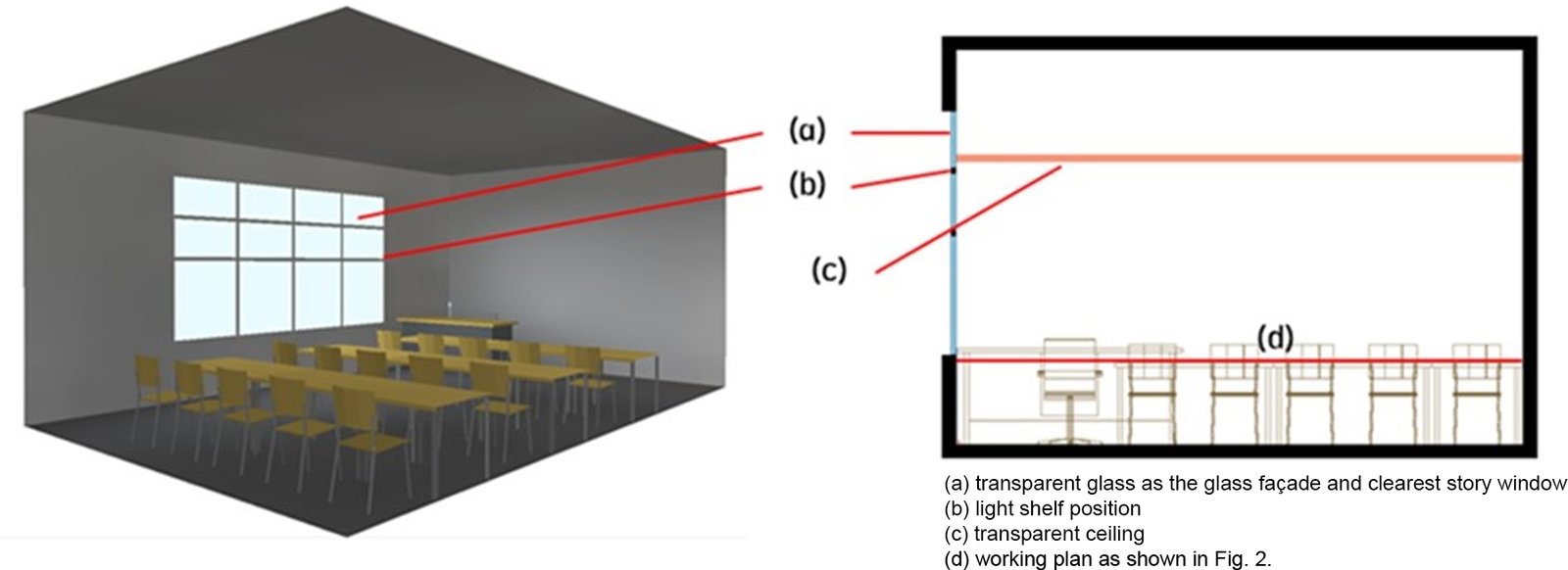 Figure 2
Figure 2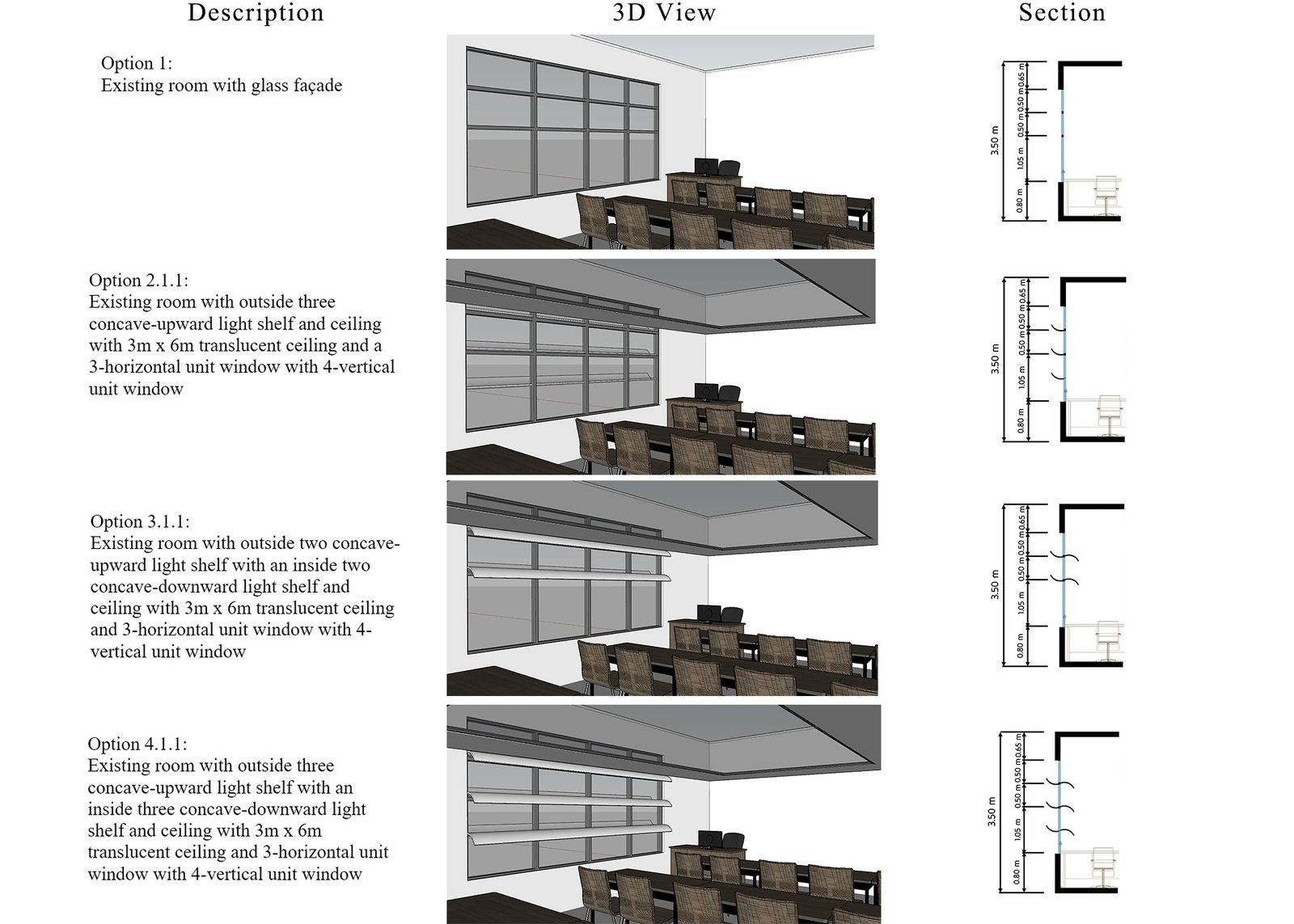 Figure 3
Figure 3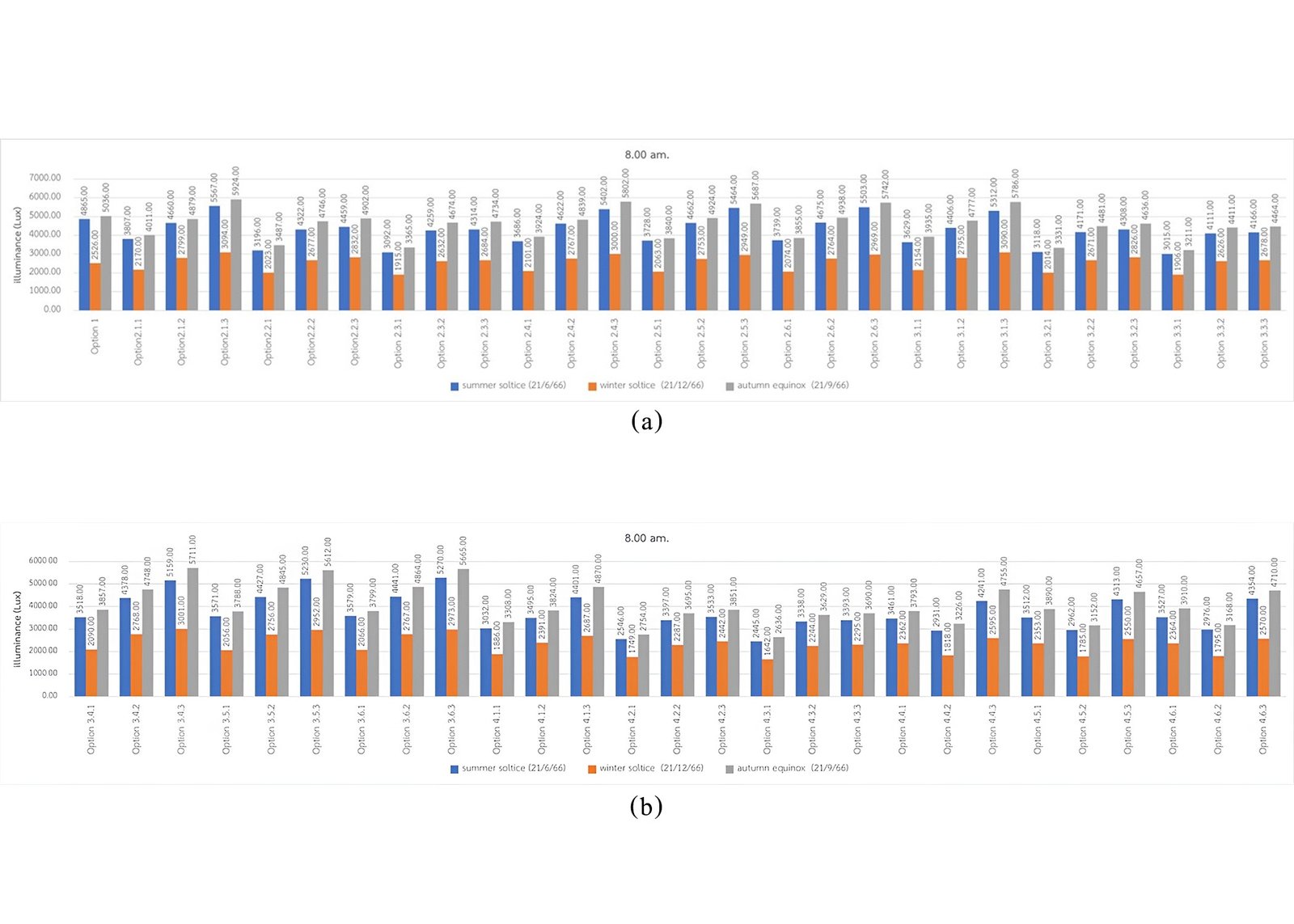 Figure 4
Figure 4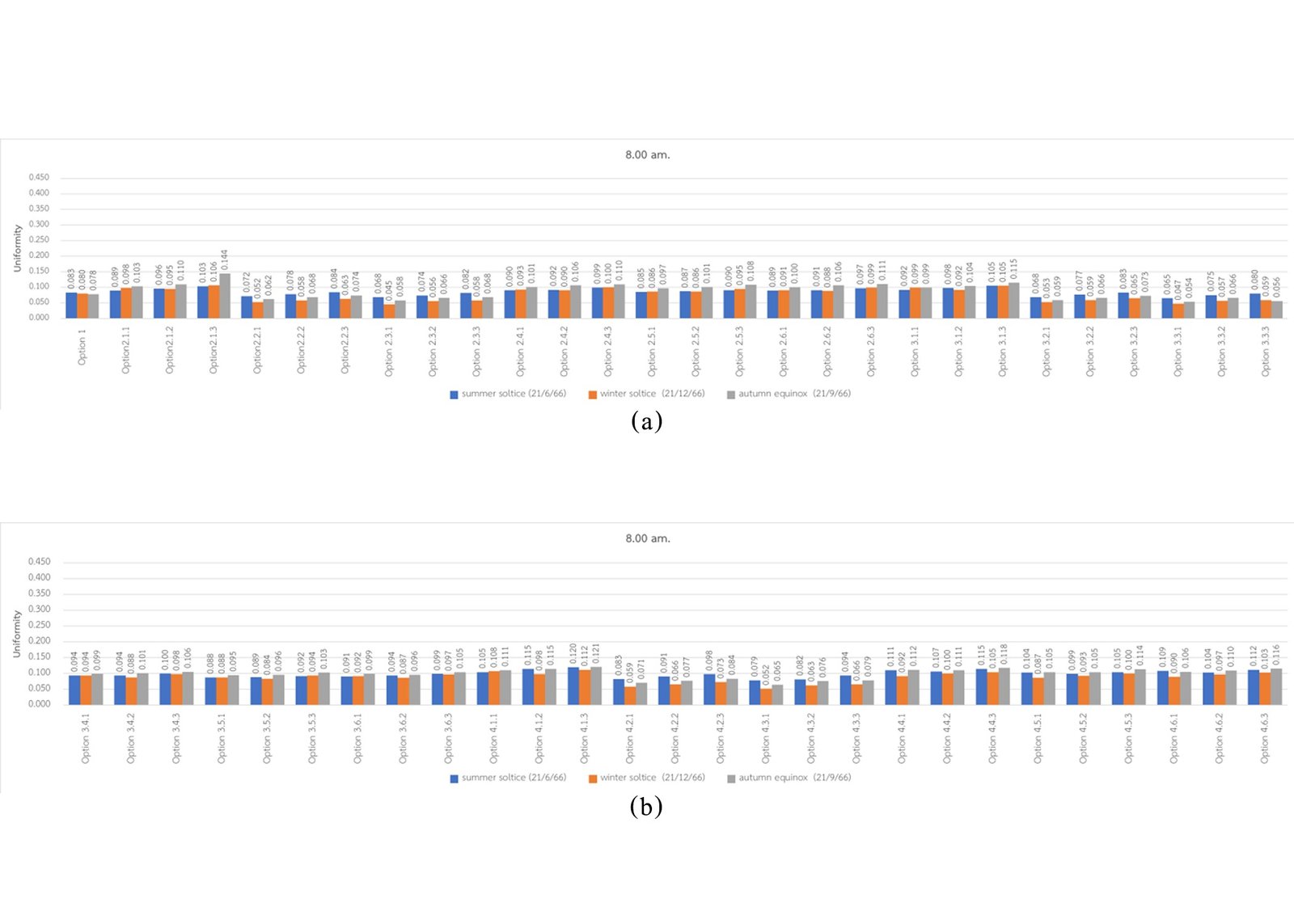 Figure 5
Figure 5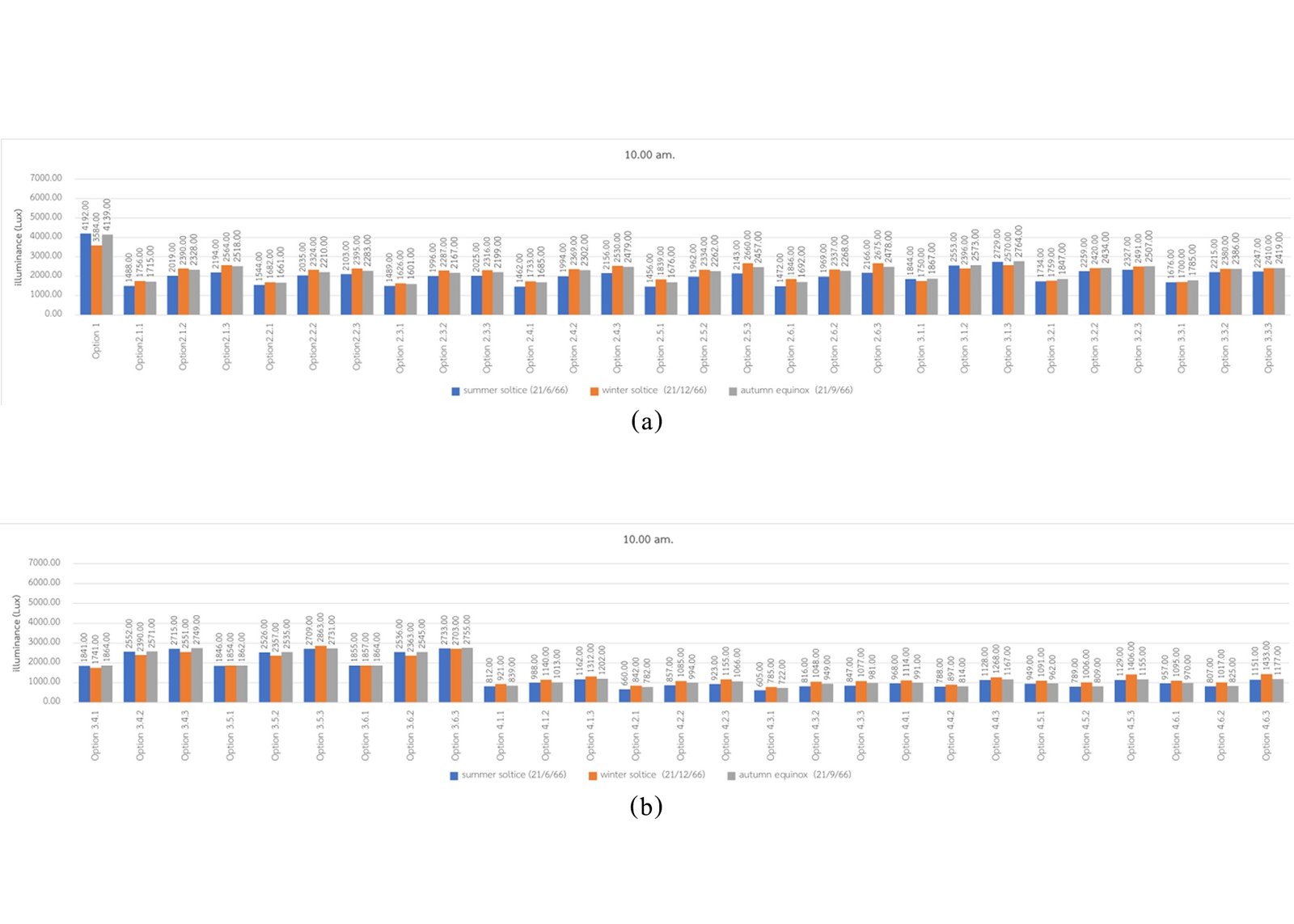 Figure 6
Figure 6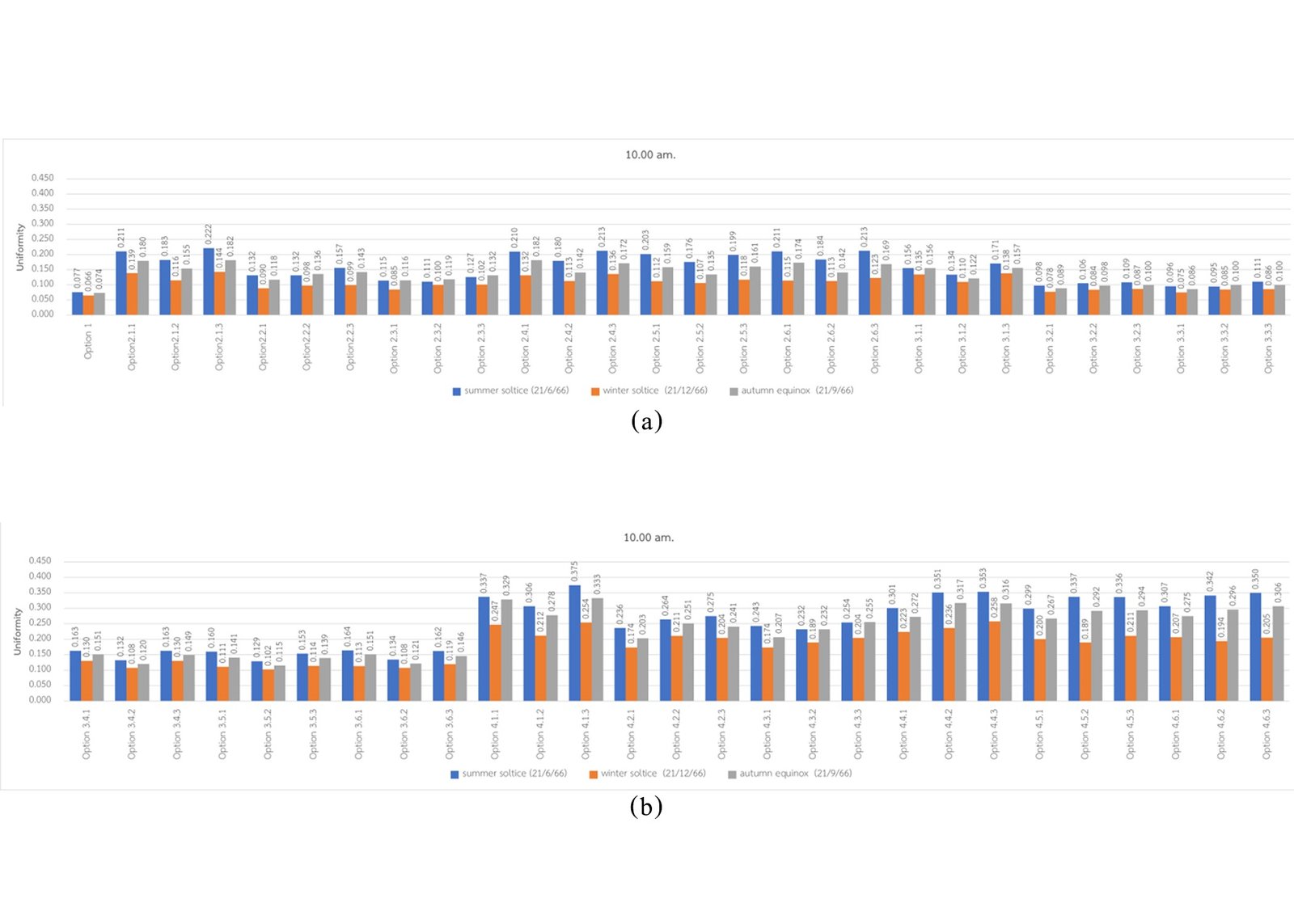 Figure 7
Figure 7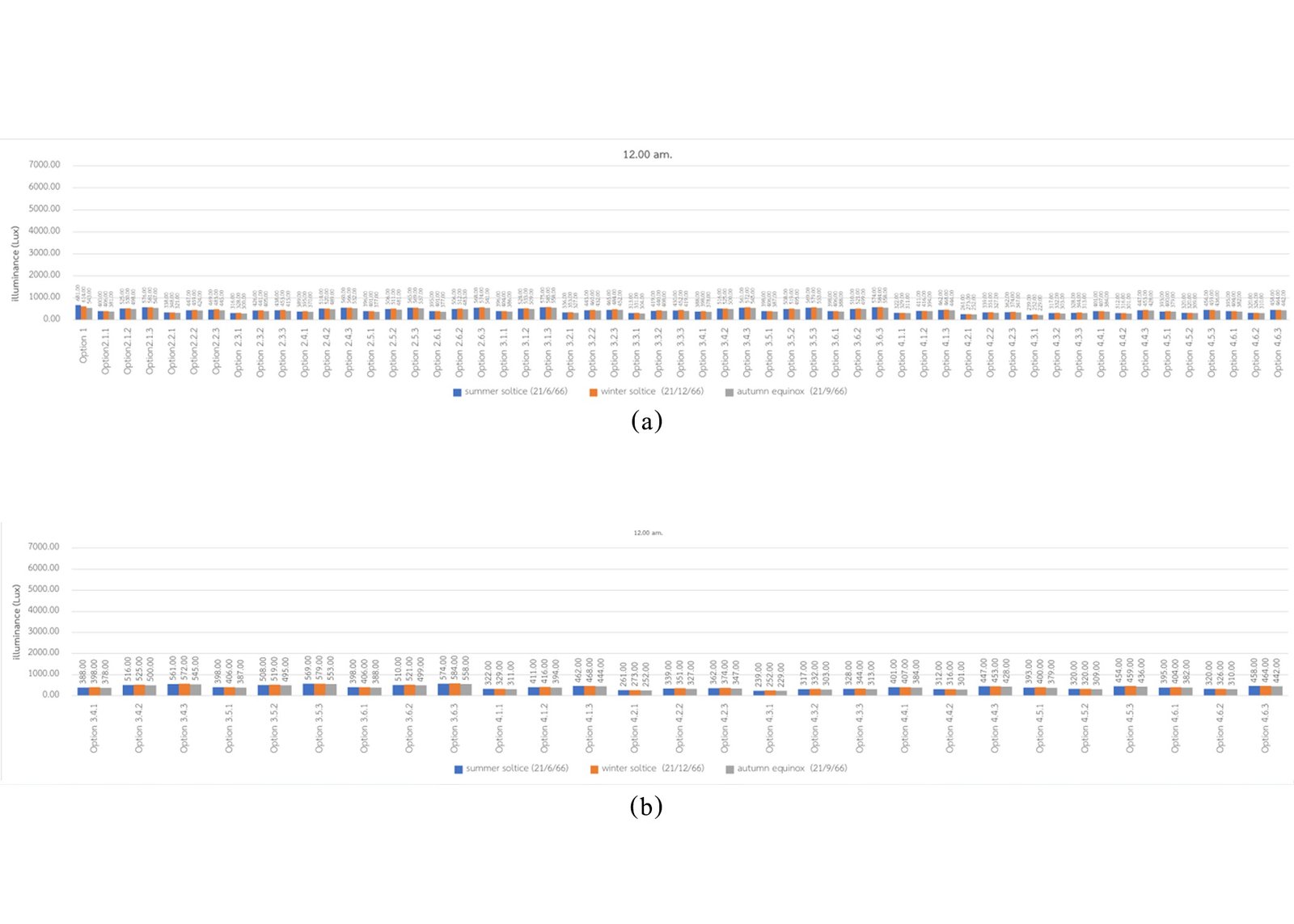 Figure 8
Figure 8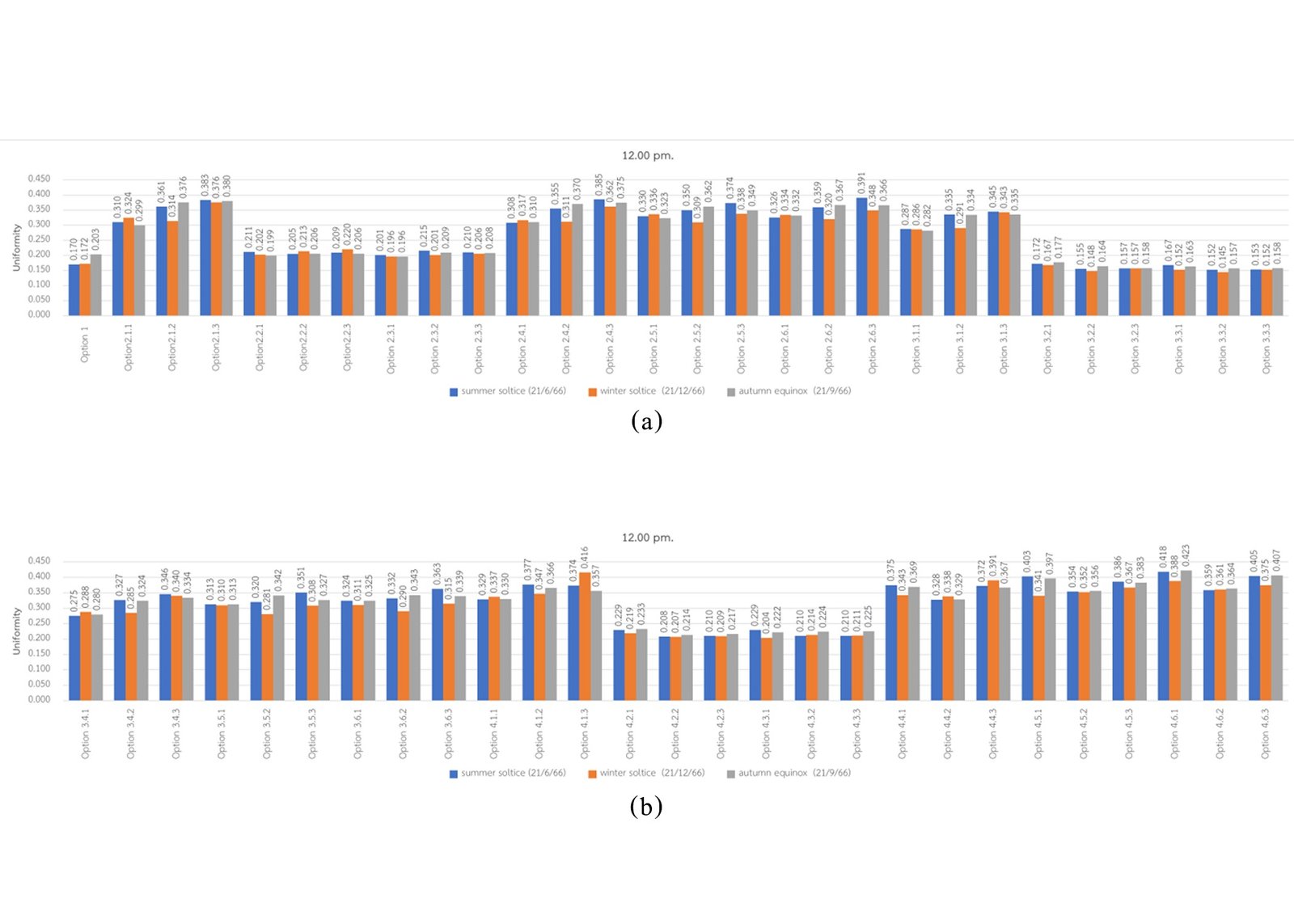 Figure 9
Figure 9 Figure 10
Figure 10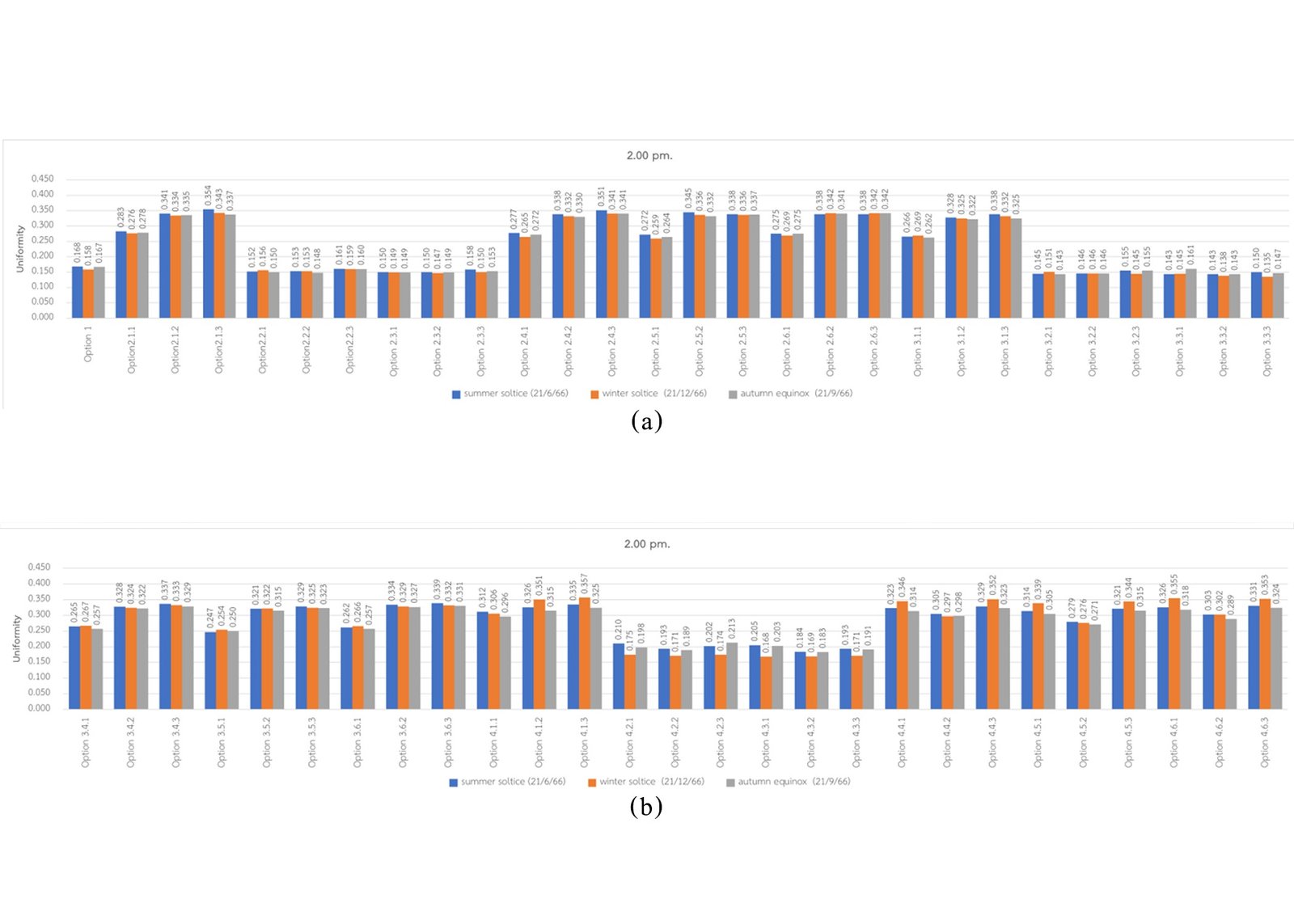 Figure 11
Figure 11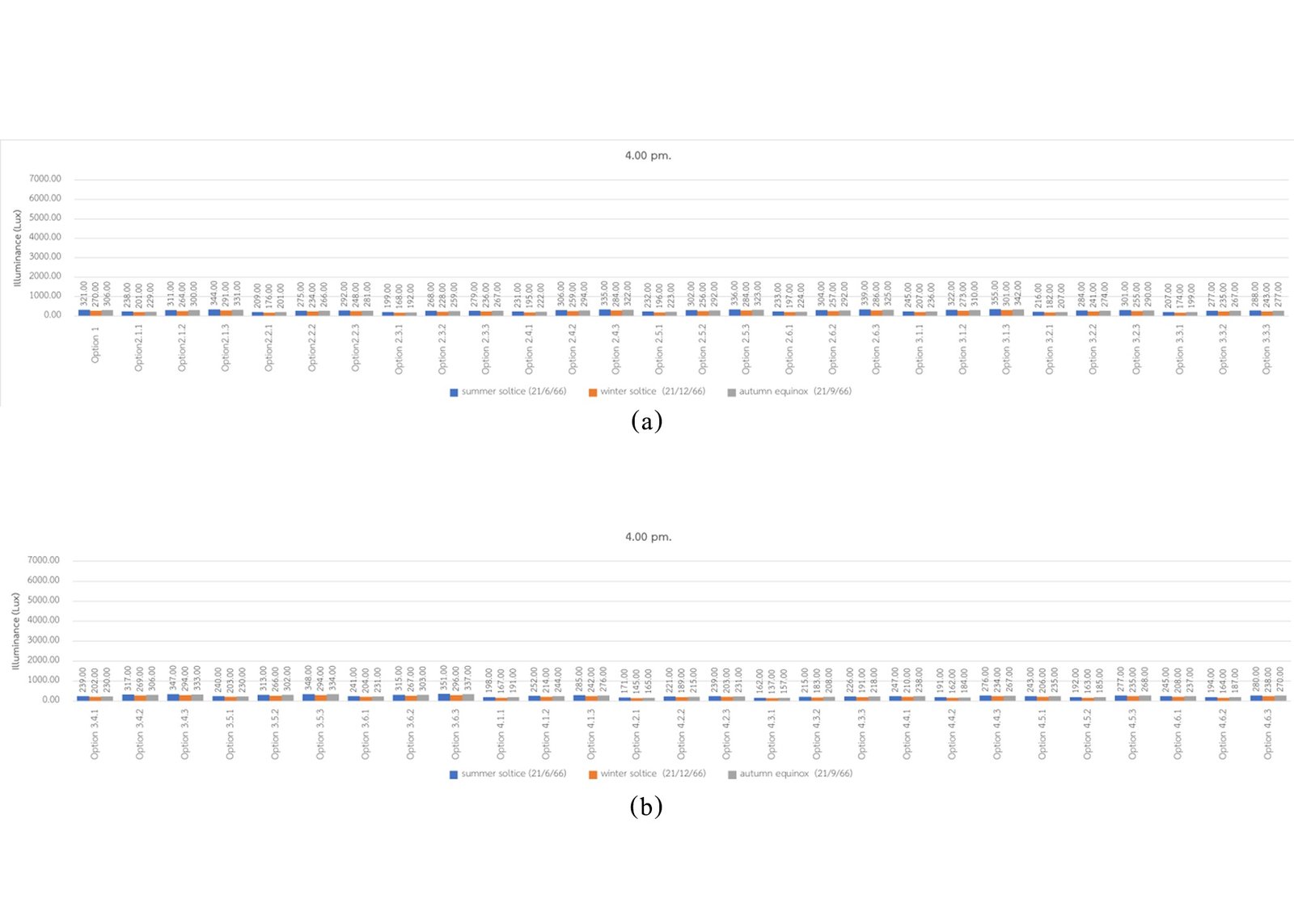 Figure 12
Figure 12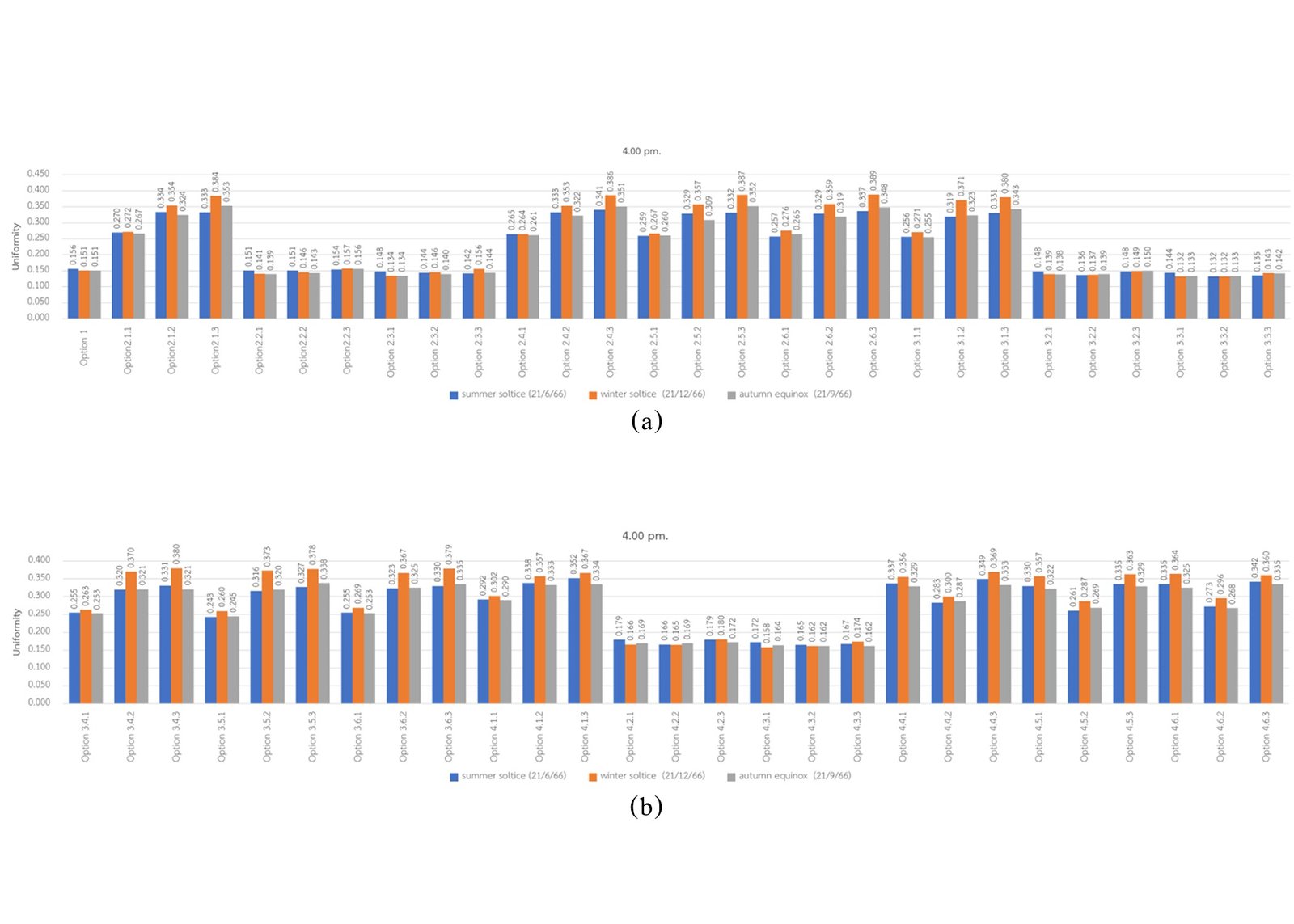 Figure 13
Figure 13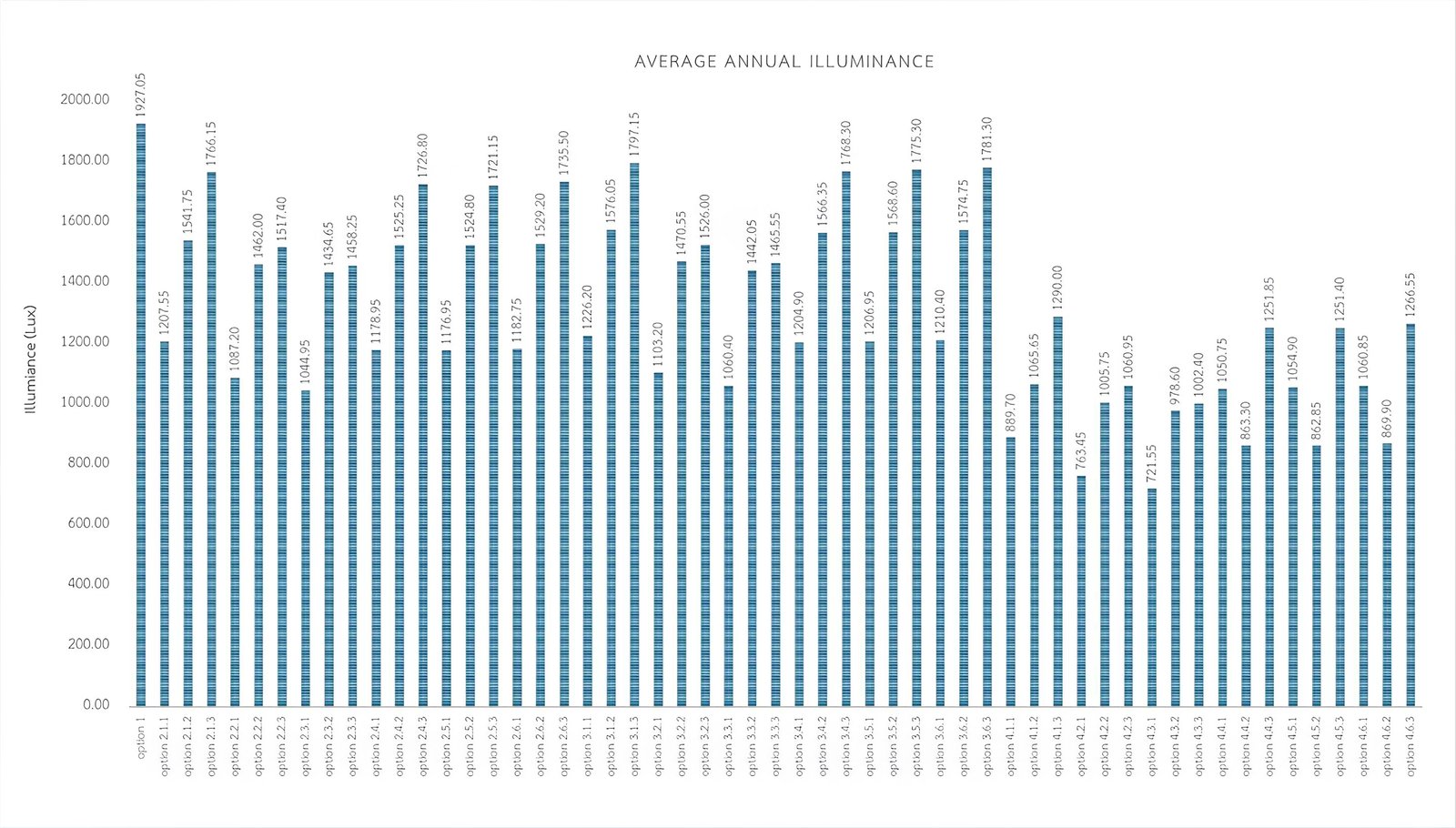 Figure 14
Figure 14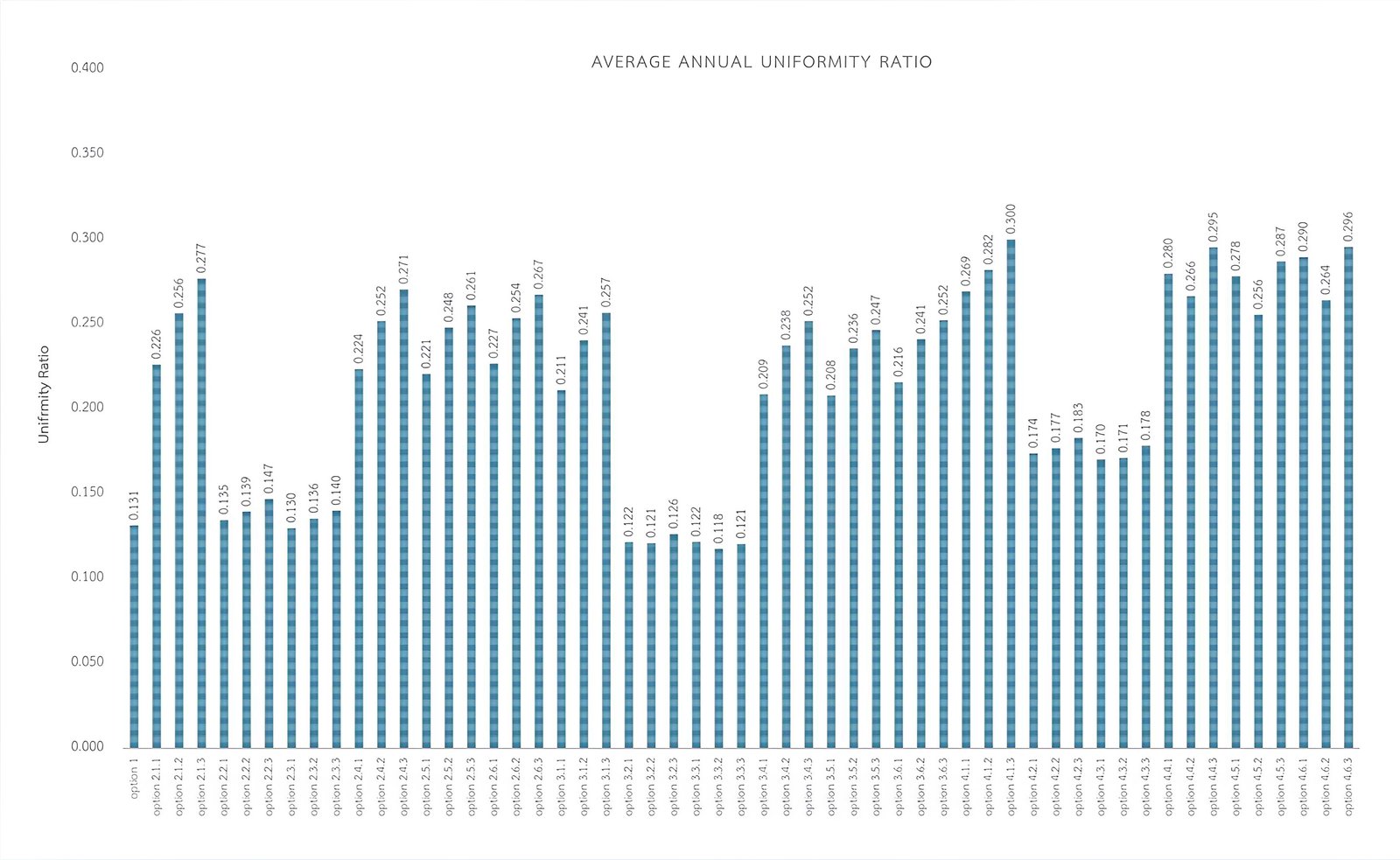 Figure 15
Figure 15 Figure 16
Figure 16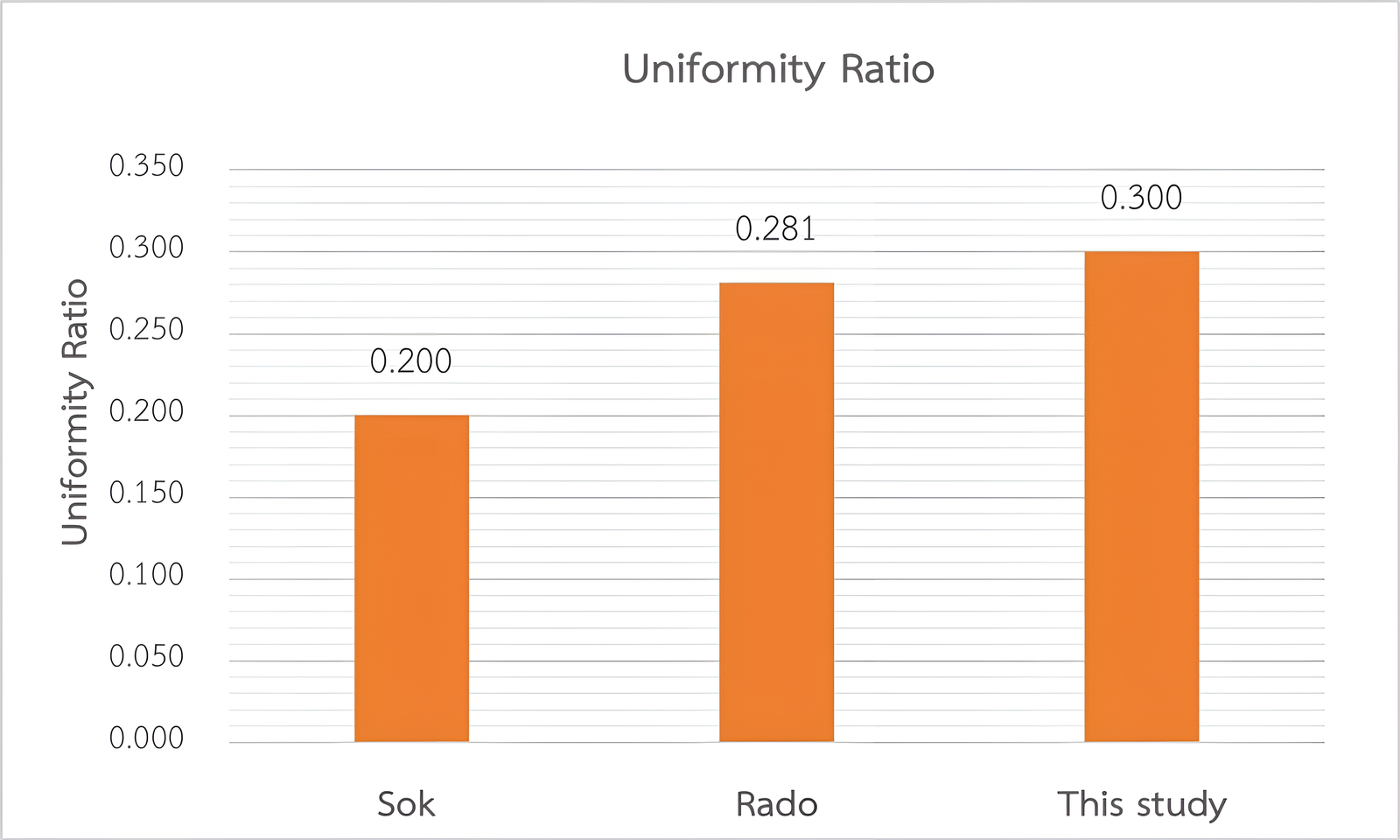 Figure 17
Figure 17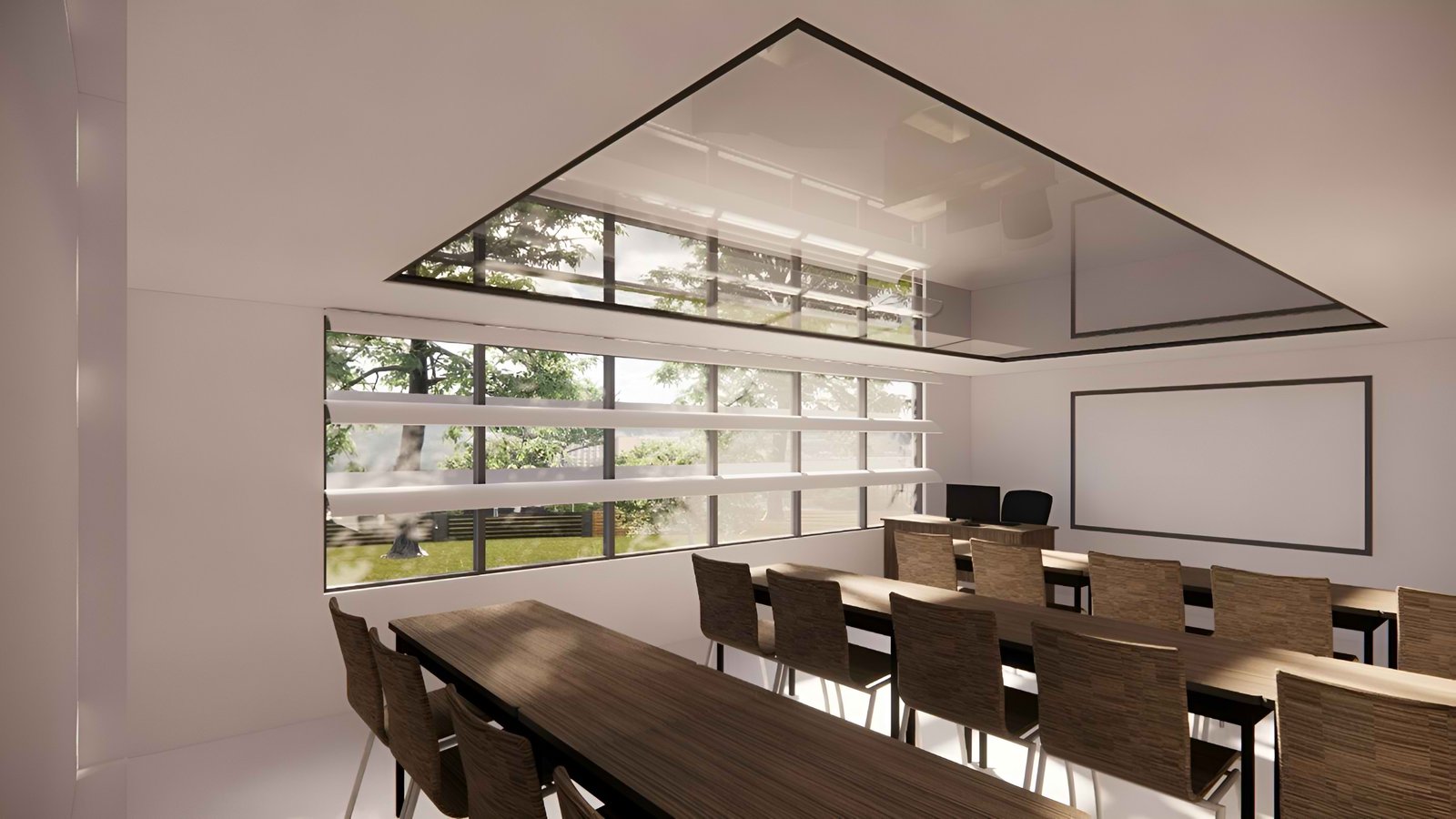 Figure 18
Figure 18 Table 1
Table 1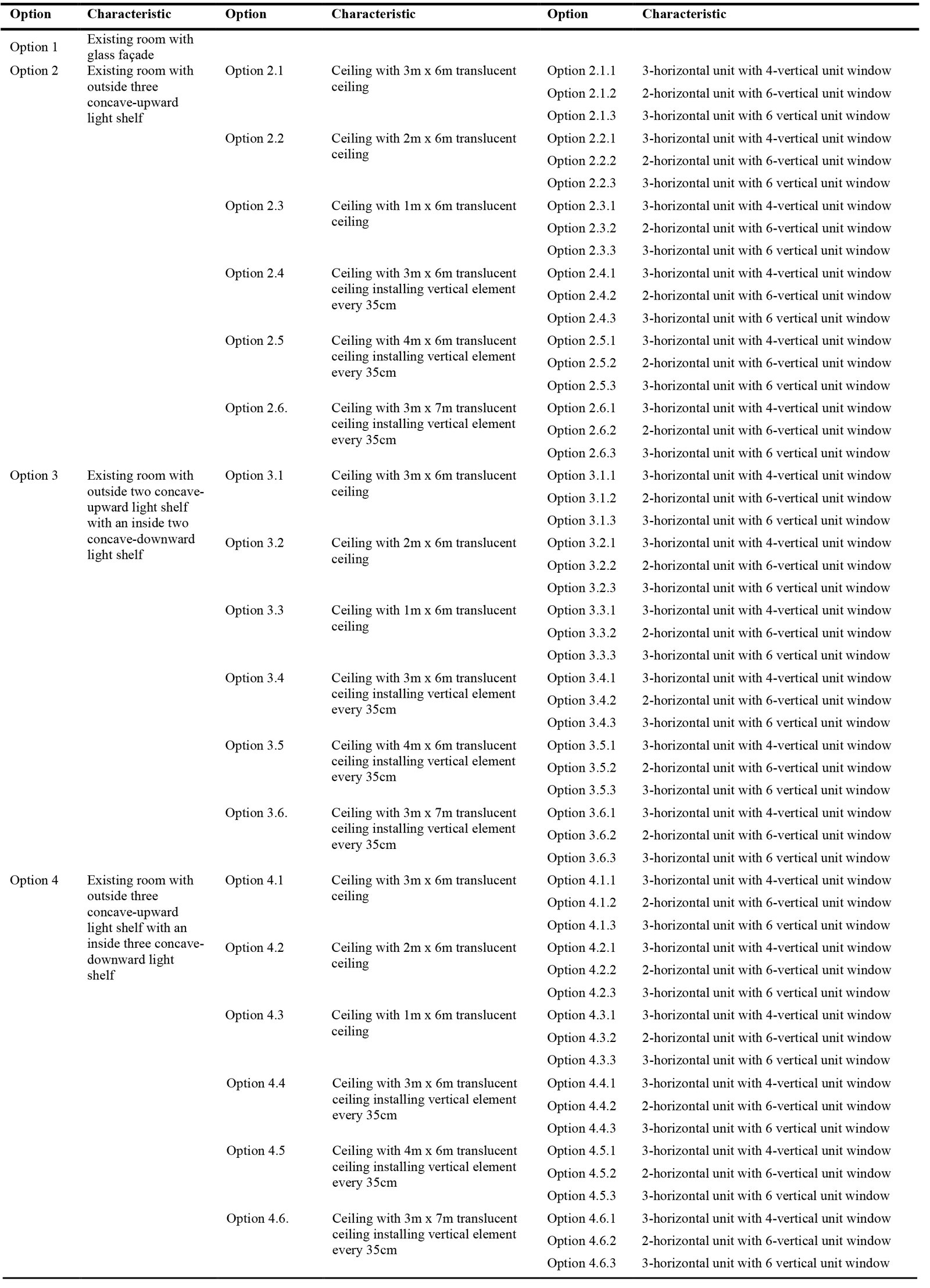 Table 2
Table 2![Illuminance levels obtained from Thai standards, IESNA, CIBSE and TIEA [29-33].](figures/12-1-19.jpg)




